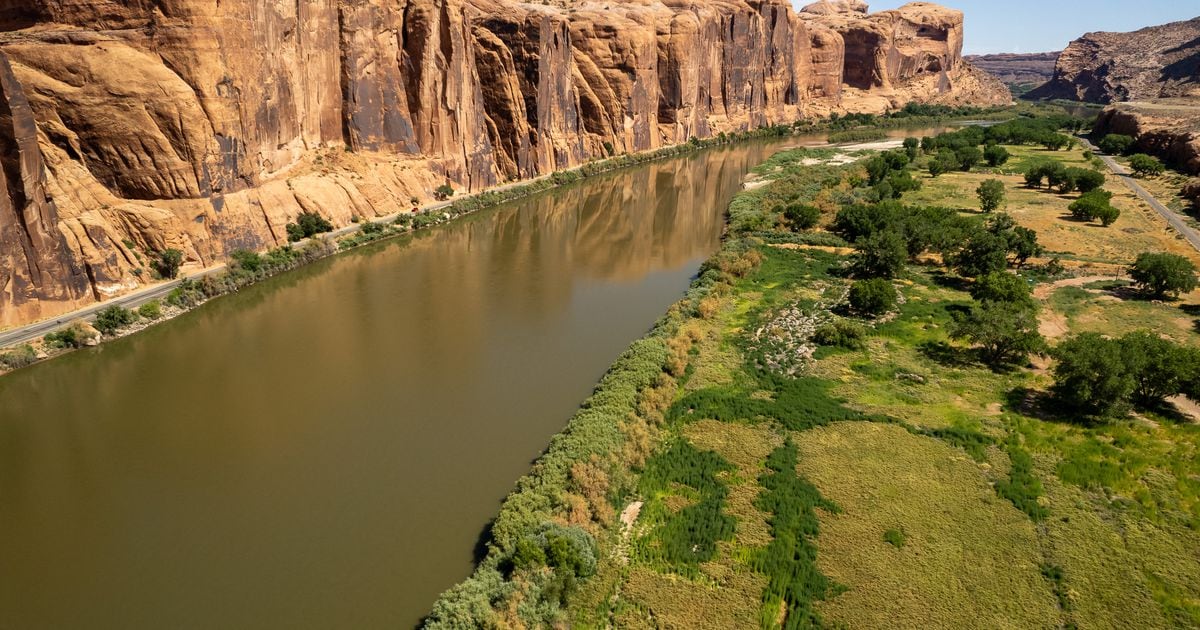This article is published through the Colorado River Collaborative, a solutions journalism initiative supported by the Janet Quinney Lawson Institute for Land, Water, and Air at Utah State University.
The Colorado River no longer reaches the sea.
The river winds down the mountains of Colorado to carve red rock canyons in the Southwest, pooling behind dams that create popular recreation areas, distribute vital water supplies and generate hydropower. Where the water once coursed into the Gulf of California is now a dry and drained estuary.
Demand exceeds supply on the Colorado River’s 1,450-mile path — from the seven Western states it sustains to irrigated agriculture to 30 Native American tribes. And that’s not all; the Colorado River’s flows have dropped by at least 20% since the turn of the century, and researchers say that flows could decrease by an additional 20% by 2050 and 35% by 2100.
The majority of Utah’s population — the 2 million people in Salt Lake and Utah counties along the Wasatch Front — gets supplementary water from the Colorado River, according to Bart Leeflang, an assistant general manager for the Central Utah Water Conservancy District who oversees its Colorado River team.
To share solutions-oriented reporting, The Salt Lake Tribune has joined the Colorado River Collaborative with 10 other news organizations across Utah.
With support from Utah State University’s Janet Quinney Lawson Institute for Land, Water and Air, the Collaborative will examine conservation strategies, river research and the water negotiations that will determine the Colorado River’s fate.
“This is one of the most pressing issues facing not only our state, but our nation,” said Brian Steed, executive director of the Janet Quinney Lawson Institute for Land, Water and Air.

102 years of the Colorado River Compact
The Colorado River Compact of 1922 forms the foundation of the river’s operations. The document, a product of its time, does not outline water rights for Native American tribes or aim for sustainability.
Drafted primarily to resolve political disagreements over the river’s use, the compact splits the Colorado River Basin in half. The Upper Basin states include Colorado, New Mexico, Utah and Wyoming; Arizona, California and Nevada compose the Lower Basin.
The compact decrees that the Upper Basin must send 7.5 million acre-feet of water downstream to the Lower Basin each year before using its own 7.5 million acre-foot allotment. An acre-foot of water is enough to sustain two households for a year.
The Upper Basin states draw their share of water from the river itself, while the Lower Basin states rely on water stored in Lake Powell and Lake Mead, the two largest reservoirs in the U.S. Climate change, reduced flows and overuse have hit the two reservoirs hard — both are currently about a third full.
The Upper Basin experiences decreased river flows from evaporation and climate change, so the states can’t reap their full Colorado River water allotment. In contrast, the Lower Basin is nearly guaranteed its share of water drawn from upstream reservoirs.
The Lower Basin states, in a 2023 agreement, promised to cut their water use by 3 million acre-feet through the end of 2026. The federal government compensated for the reductions with infrastructure funding from the Inflation Reduction Act.
Utah water experts have concerns that this reliance on “compensated conservation” isn’t sustainable, The Tribune reported in December. Depending on future hydrology and reservoir storage, states may have to reduce their use without receiving money in exchange.
function onSignUp() { const token = grecaptcha.getResponse(); if (!token) { alert("Please verify the reCAPTCHA!"); } else { axios .post( "https://8c0ug47jei.execute-api.us-east-1.amazonaws.com/dev/newsletter/checkCaptcha", { token, env: "PROD", } ) .then(({ data: { message } }) => { console.log(message); if (message === "Human

























